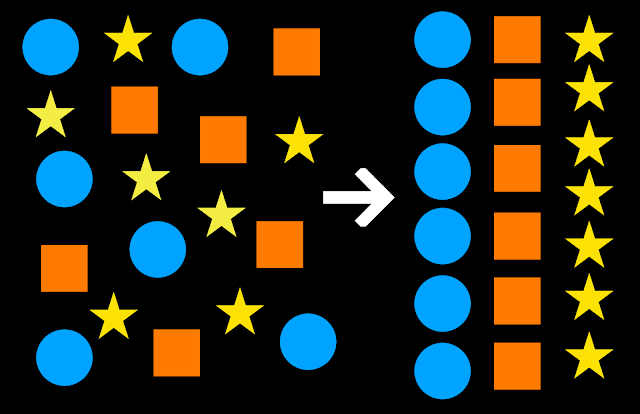Data Science meets Cyber Security
If you go on the internet and search for ‘Trending jobs’ or ‘Best jobs’ or the ‘Most in-demand jobs’ and the most famous ‘Highest paid jobs’ you will definitely find designations like ‘Data Scientist’, ‘Ethical Hacker’, ‘Machine Learning/Artificial Intelligence Engineer’ in the results. But what do all these fancy words mean? Let us explain it to you in a simple way!
Let us start with what is DATA SCIENCE?
As the name suggests, science of data. What kind of data? Let’s just say all kinds of data. The data you can count and not count, the data you can see and cannot see, data which is structured and unstructured (sometimes, both together). What do we do with this data? We clean it, we analyse it, we explore it. But why? What for? For making predictions, learning patterns, getting coolest results with minimum effort. But don’t worry, you just have to tell the machine how to do all these tasks by making it artificially intelligent with the help of data.
The moment you read or listen to the word ‘artificial intelligence’ or ‘machine learning’, we all think of our super sweet virtual assistants Alexa, Siri, Ok Google Assistant and so much more. If you wonder how they work? It’s all because of the magic of data. The beauty of data is that it will tell you the story of what has already happened, what is happening and what may happen which makes our decisions and life simpler and efficient.
JOURNEY/LEARNING PROCESS OF A DATA SCIENCE ENTHUSIAST
All these have involvement of discrete mathematics for finding out probabilities and to carry out statistical analysis, data storage tools for managing the vital data, data visualisation tools for storytelling and mostly coding the algorithm files which are like a guide of functions for your system.
So do you need to be a pro in coding and statistical analysis of the data? How would you be able to cope up if you switch from your non discrete maths or non coding background? This may sound cliche or philosophical, but the answer is if you really enjoy the process, you can do everything and anything. That’s it. That’s the key to switching any career with no prerequisite background.
Most people get pretty sceptical about data science when they get to know there’s statistical and discrete maths involved and it’s completely natural to feel so. Even we were, but as soon as you keep going with your passion to learn and create, it's 100 percent possible.
In the learning process, you must take your own time choosing the first programming language, tools to learn at your own pace, preference and the problem you or your project are about to solve.
Concepts with fancy words sound scary with names like ‘probability distributions’, ‘statistics’, ‘deep learning’ or ‘big data’ at first glance but once you sit with it and process it, you’ll get the hang of it then you may enjoy it, you will know if this field is right for you or not.
IN-DEMAND CONCEPTS AND TOOLS FOR YOU TO GET STARTED WITH
The coding of algorithms is most popularly done in Python and for more data based files are written in R.
Coding tools - Jupyter, Anaconda, R Studio, Visual Studio Code
Discrete Mathematics - Linear Algebra, Statistics and Probability
Data storage & management tools - Spreadsheets, MySQL
Data Viz. tools - Tableau, Looker, PowerBI
Communities - Github, Kaggle
Stay tuned for more information about the most helpful resources!
WHAT IS CYBER SECURITY?
Click here and check out our blog on the same! 👇
https://www.datasciencemeetscybersecurity.com/2022/02/getting-started-in-cyber-security-pros.html
HOW DATA SCIENCE MEETS CYBER SECURITY?
Ever wondered how much data any company deals with on a daily basis? How do they secure it? Sure, they may have some security plans, but how do they actually implement and execute it? This company's data is in big sizes and complex in nature.
The main aim of cyber security is to always protect the crucial information of the company and to prevent them from leaking. But, as we always talk about the cyber attacks leading to massive data leaks, what actually happens when the attack takes place?
Data breaches cost heavy loss of money to the companies. For example: Data breaches cost companies in India about ₹165 million on an average, according to a new report by IBM Security and Ponemon Institute. This is an increase of 17.85% from ₹140 million in the last report released in 2020.
Check out more latest data breaches and what it had cost to a company: https://www.upguard.com/blog/biggest-data-breaches
Now the question is how will data science help us to mitigate these attacks?
Of course, manpower or doing this manually is not an option as it contributes to human errors and loads of time, resources and energy consuming processes. Hiring tons of people for these jobs invites risk and can be expensive.
Next you may think of a simple software application which alerts you of these attacks. The disadvantage of this option is that it may not have real-time results which leads to slow or even too late to take action against the attack.
DATA SCIENCE can effectively work with Cyber-security to prevent or else we can also say to remove the existence of CYBER ATTACKS! HOW?
Usually hackers create malware to attack the system and it is expected that the security professionals should detect the malware before it damages the company’s data, but usually it is not possible in real time.
But guess what? Data science will help us do the same as its main focus is to work with data. So it will help us analyse the data from malware which has already infected the system in the past. And by studying the data from several malware, it will help us detect the intrusion patterns, fraudulent techniques which are generally used by the hackers to steal the private information.
In other words, Data science would help us create the real time solutions for all the cyber security problems by exploring and identifying the hackers suspicious behaviours and by knowing how they are able to infiltrate the systems, networks and applications.
My personal favourite is: PREDICTIVE ANALYTICS in DATA SCIENCE WHICH IS HELPING COMPANIES WATCH AND SORT THERE WEB-TRAFFIC.
An application generally deals with two types of traffic i.e good traffic and bad traffic. Good traffic includes safe network traffic whereas bad traffic includes malicious traffic. This malicious traffic is an open invitation to dangerous attacks. No worries because with the latest and advanced technology this bad traffic is detected by using the machine and deep learning algorithms.
With the help of predictive analytics, where they use existing data and apply the statistics and algorithms to help us predict the future outcomes more efficiently and accurately to help companies discover and be ready incase of unknown cyber attacks or similar situations.
- Team Data Science meets Cyber Security 💙❤️









Excellent you have provided important data for us. It is essential and informative for everyone. Keep posting always. I am very thankful to you. Read more info about hacker for hire
ReplyDeleteHey Hackers phase, hope you're doing fine. Thank you so much for reading and sharing your valuable feedback, means a-lot to us. We are glad that it helped you. Do check out our other blogs :)
Delete- Data Science meets Cyber Security. <3
Excellent you have provided important data for us. It is essential and informative for everyone. Keep posting always. I am very thankful to you. Read more info about hacker for hire
ReplyDelete